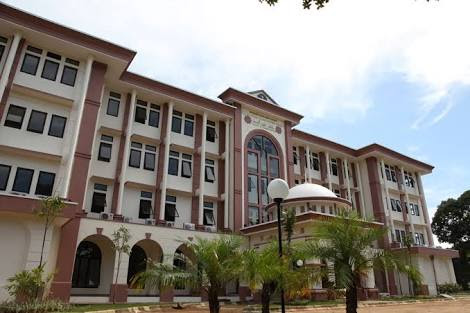ANALYSIS OF 8 GRADER STUDENTS’ PERFORMANCE AT SMP AM IN UNDERSTANDING THE TRIANGLE CONCEPT BASED ON NCTM GEOMETRY STANDARD
ANALISIS KINERJA SISWA KELAS 8 SMP AM DALAM MEMAHAMI KONSEP SEGITIGA BERDASARKAN STANDAR GEOMETRI NCTM
Abstract
Geometry plays a pivotal role in mathematics education, contributing significantly to the development of students' spatial awareness, intuition, and visualization skills. Despite its importance, there are reported challenges in students' understanding of geometry, with the Merdeka curriculum geometry standard noted for not adequately emphasizing the fundamental understanding of triangle properties before introducing congruence. Conversely, studies have highlighted the effectiveness of incorporating NCTM (National Council of Teachers of Mathematics) standards in fostering mathematical comprehension in this domain. This research study delves into the performance of eighth-grade students in comprehending triangle concepts, guided by the NCTM geometry standard. Employing a content analysis technique on student work, created based on NCTM indicators and assessed accordingly, the study reveals deficiencies in students' understanding. These challenges include difficulties in describing and categorizing triangles, identifying angle relationships, constructing logical arguments using both inductive and deductive reasoning, and recognizing relationships between side lengths. These findings underscore the urgent need to address these knowledge gaps and bridge the disparity between NCTM standards and students' current comprehension levels regarding triangle concepts.
Downloads
References
Biber, A. C. (2020). Students’ difficulties in similar triangle questions. Kıbrıslı Egitim Bilimleri Dergisi, 15(5), 1146–1159. https://doi.org/10.18844/CJES.V15I5.5161.
Budi, W. S. (2022). Matematika 1 untuk SMP/MTS kelas VII (k-merdeka). Jakarta: Erlangga.
Creswell, J. W. (2012). Educational research: Planning, conducting, and evaluating quantitative and qualitative research. Pearson Education, Inc.
Fabiyi, T. R. (2017). Geometry concepts in mathematics perceived difficult to learn by senior secondary school students in Ekiti State Nigeria. IOSR Journal of Research & Method in Education, 7(1), 83–90.
Fraenkel, J. R., & Wallen, N. E. (2008). How to design and evaluate research in education (7th ed.). New York, NY: McGraw Hill.
Iskak, K. B., Kusmayati, T. A., & Fitriana, L. (2020). Students’ mathematics representation ability from picture form to equation. Journal of Physics: Conference Series, 1469(1). https://doi.org/10.1088/1742-6596/1469/1/012164.
Joung, E., & Byun, J. (2021). Content analysis of digital mathematics games based on the NCTM content and process standards: an exploratory study. School Science and Mathematics, 121(3), 127–142. Retrieved from https://onlinelibrary.wiley.com/doi/abs/10.1111/ssm.12452.
Krippendorff, K. (2004). Measuring the reliability of qualitative text analysis data. Quality and Quantity, 38, 787–800. Retrieved from https://link.springer.com/article/10.1007/s11135-004-8107-7.
Kusno, K., & Sutarto, S. (2022). Identifying and correcting students’ misconceptions in defining angle and triangle.
Lutfi, M. K., Juandi, D., & Jupri, A. (2021). Students’ ontogenic obstacle on the topic of triangles and quadrilaterals. Journal of Physics: Conference Series, 1806(1). https://doi.org/10.1088/1742-6596/1806/1/012108.
Sarama, J., & Clements, D. H. (2004). Building blocks for early childhood mathematics. Early Childhood Research Quarterly, 19(1), 181–189. Retrieved from https://www.sciencedirect.com/science/article/pii/S0885200604000158.
Sehatta, S. (2002). Profil Miskonsepsi Siswa SMP tentang Bangun Datar. Forum Pendidikan, 23(1), 19–47.
Siregih, & Sehatta. (2022). Profil miskonsepsi siswa SMP tentang bangun datar. Forum Penelitian Pendidikan, 23, 19–47.
Stemler, S. (2001). An overview of content analysis. Practical Assessment, Research, and Evaluation, 7(1). Retrieved from https://openpublishing.library.umass.edu/pare/article/id/1376/.
Suyitno, H., Utami, E. N., & Veronica, R. B. (2019). The development of geometry concepts understanding based on NCTM reference in learning using discovery learning model The development of geometry concepts understanding based on NCTM reference in learning using discovery learning model. Unnes Journal of Mathematics Education, 8(1), 42–48. https://doi.org/10.15294/ujme.v8i1.28683.
Volderman, C. (1998). How maths work. London: Dorling Kindersley.
Copyright (c) 2023 Balqis Prameswari, Faradillah Haryani

This work is licensed under a Creative Commons Attribution 4.0 International License.

